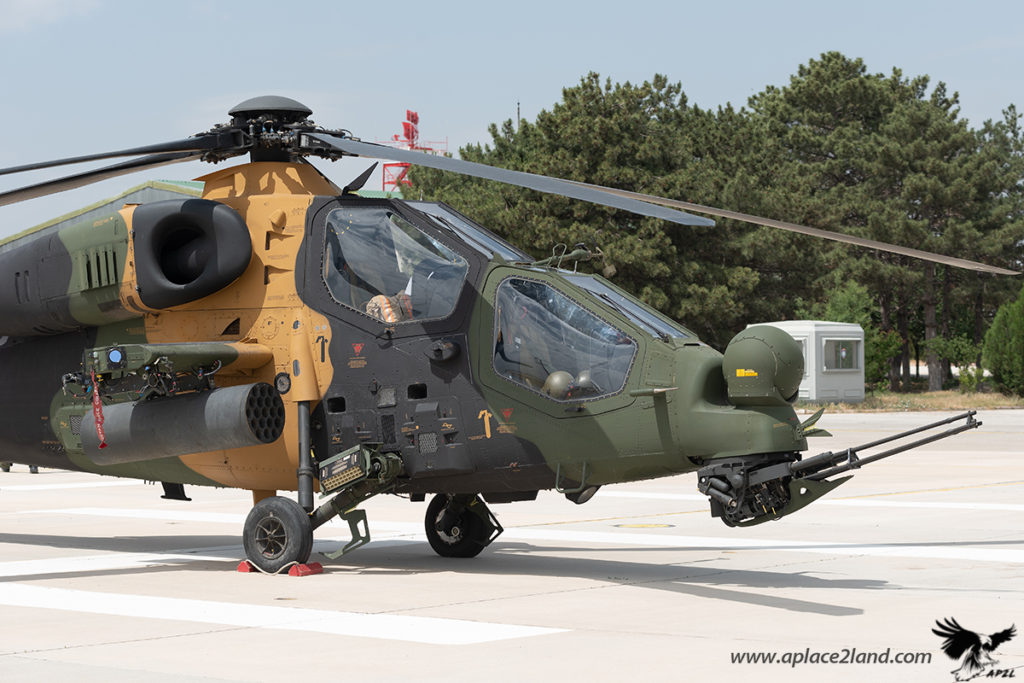The CSAR (Combat Search And Rescue) exercise “International Anatolian Phoenix-2021”, conducted under the supervision of the Anatolian Eagle Training Center (AKEM), took place between May 24 and June 4, 2021, at the 3rd Main Jet Base in Konya, Turkey. Eagle Training Center (AKEM), which has been organizing these exercises since its creation in 2001 at the Konya Air Base.
It was attended by 440 soldiers and 23 aircraft from Turkey, Qatar, Azerbaijan and the Turkish Republic of Northern Cyprus.

Since the first edition occurred in 2009, the main aim of this exercise – for combat ready aircrew only – is focused to increase experience for Combat Search and Rescue (CSAR) capability.
Because of the growing importance of this kind of combat operations in modern asymmetric warfare, the Anatolian Phoenix exercise has been carried out twice a year since 2012.
Anatolian Phoenix 2021-1 Participating
All branches of the Turkish Armed Forces took part in Anatolian Phoenix 2021-1. In terms of aircrafts and personnel, most participants came from the Türk Hava Kuvvetleri (THK- Turkish Air Force) which deployed a total of 175 military personnel, including 38 pilots, three CSAR teams, and a JTAC (Joint Terminal Attack Controller) team.

From the flying units headquartered at Konya, the 132 Filo “Hançerler” provided six F-16C/Ds, the 131 Filo “Ejder” (Dragon) one of its E-7Ts AEW&C, while 135th Liaison and SAR Squadron “Ateş” (Fire) provided the CSAR teams with a pair of AS 532AL Cougar helicopters. Also, a single CN-235 and one Anka-S UAV from the THK took part in the exercise.

The Türk Kara Kuvvetleri (TKK – Turkish Army) participated with a couple of T-129 ATAK combat helicopters, one AS 532UL Cougar and a CSAR team.

The Jandarma Genel Komutanlığı (Gendarmerie General Command) and Turkish Special Operations Force (TuSoF) took part with a CSAR team and a S-70 utility helicopter each. Finally, the Turkish Navy also sent a CSAR team to the exercise.

A small contingent came from the Turkish Republic of Northern Cyprus (TRNC), which sent a single AS 532UL Cougar along with a CSAR team.

Since the start of the 21st century, Turkey’s bilateral relations with Qatar and Azerbaijan have increasingly become closer. The Turkish government has been closely cooperating on defense and security with both countries, signing several military agreements, including exports of Turkish military equipment and military training exchange programs. Nowadays, the two countries are probably Turkey’s closest allies in the region, and their presence at Konya, with personnel and aircraft, is not a big surprise.
The Qatar Emiri Air Force deployed the largest contingent among the foreign participants, sending 130 military personnel (including 22 pilots and 15 CSAR and JTAC team members) along with a pair of AW-139 multirole helicopters from 20th Squadron, one 12th Transport Squadron C-130J, and a 10th Transport Squadron C-17. Both transports were used to support the contingent and also for the launch of paratroopers and material during the exercise.

The Azerbaijani Air and Air Defence Force (Azərbaycan Hərbi Hava Qüvvələri) sent 54 servicemen, half of which made up the CSAR team with a pair of Mi-17 multirole helicopters, coming from Qala Air Base.

Probably due to ongoing pandemic, the Slovak’s participation was cancelled this year (a single CSAR team was originally scheduled) leaving the exercise without participation by other NATO countries aside from Turkey itself.
The Anatolian Phoenix exercise
The exercise was conducted under the supervision of the Anatolian Eagle Training Center (AKEM), which has organized the various editions of the Anatolian Phoenix and Anatolian Eagle exercises since its establishment at the 3rd Main Jet Base of Konya in 2001.

The exercise benefits from the large AKEM’s training areas, including the large firing range located approximately 45 minutes away from Konya air base, which enables tactical training flying without any limitations.
Different kinds of missions were executed during daytime, except for June 2nd when also a night mission was performed.

During the press conference, Lt. Col. T. Tumer explained: “The exercise is structured to give the maximum freedom to the aircrew personnel in order to solve the problems presented in a real tactical scenario. They are responsible for the tactical planning, briefing, and execution of all missions. The objectives of the Anatolian Phoenix exercise are multiple: experiencing the possible ground assisted Joint Task Force (JTF) missions, in a similar operational environment with a realistic scenario, allows for making the necessary feedback.
We test the JTF C2 system’s effectiveness, training the personnel and developing coordination methods for every JTF component. Moreover, the execution of bi-/unilateral training such as formation flights, tactical navigation, etc. improves the skills and increases the combat readiness among the participants”.

He adds: “It is also an opportunity to share experience and tactics, facilitating an exchange of ideas between the different military assets, in order to strength military relationship and improve interoperability within the different branches of the Turkish Armed Forces, as well as with the foreign participants”.

Operations were divided as follows: the first day saw the participants arriving at Konya and was dedicated to the preparation process, including a detailed briefing regarding the exercise planning. The second day was spent for familiarization flights. From May 26 till June 3rd, aircrafts and personnel were tasked to fulfill a wide range of missions, including SAR/CSAR, Close Air Support (CAS), Medical Evacuation (MEDEVAC), High Value Target (HVT), infiltration and exfiltration, parachute jumping, convoy protection, dynamic targeting, rescue escort, and fast rope insertion. Most of these missions were carried out at the Konya range. The last day, June 4th, was dedicated to evaluation, closing ceremony, and starting the re-deployment.
